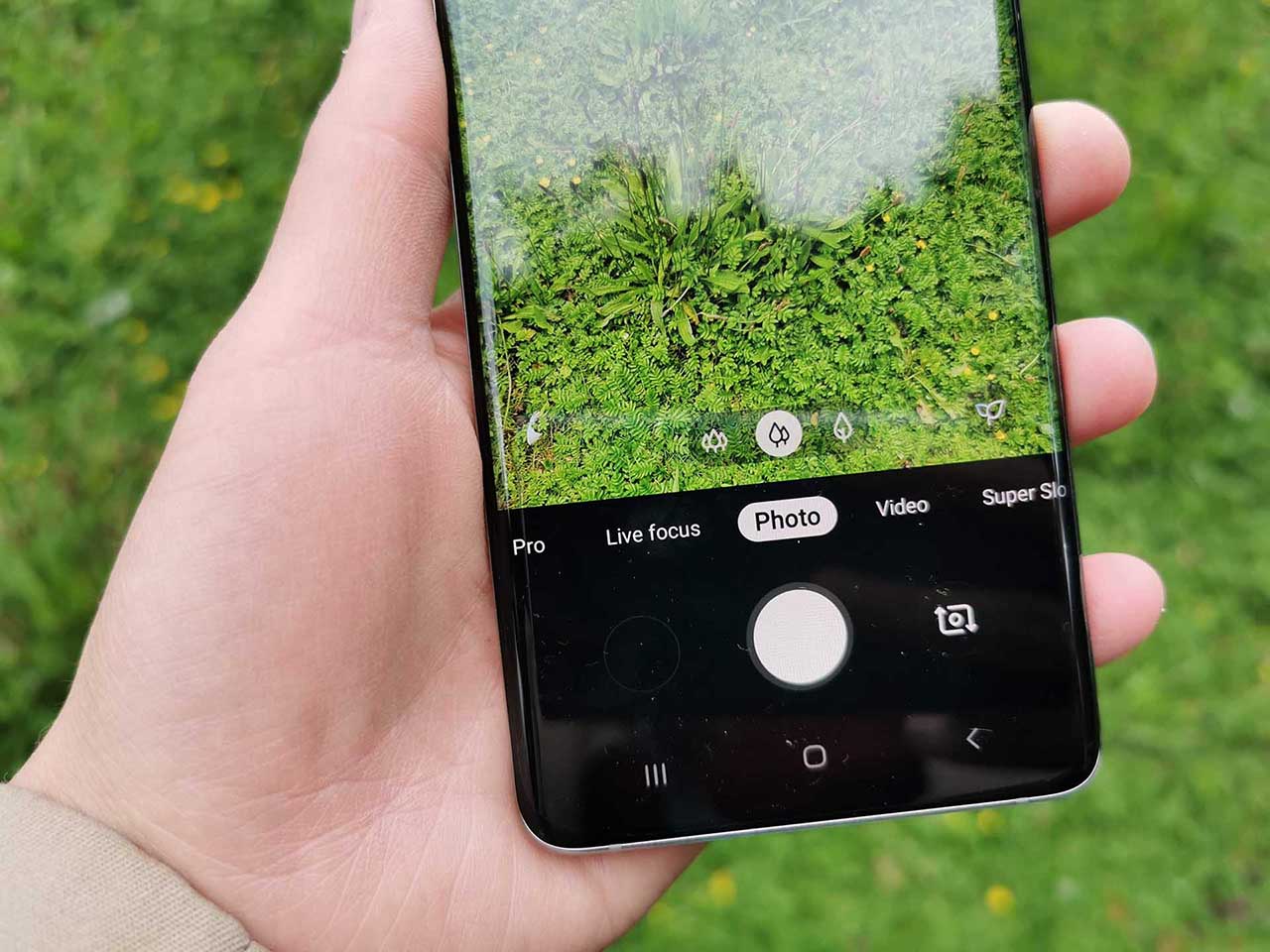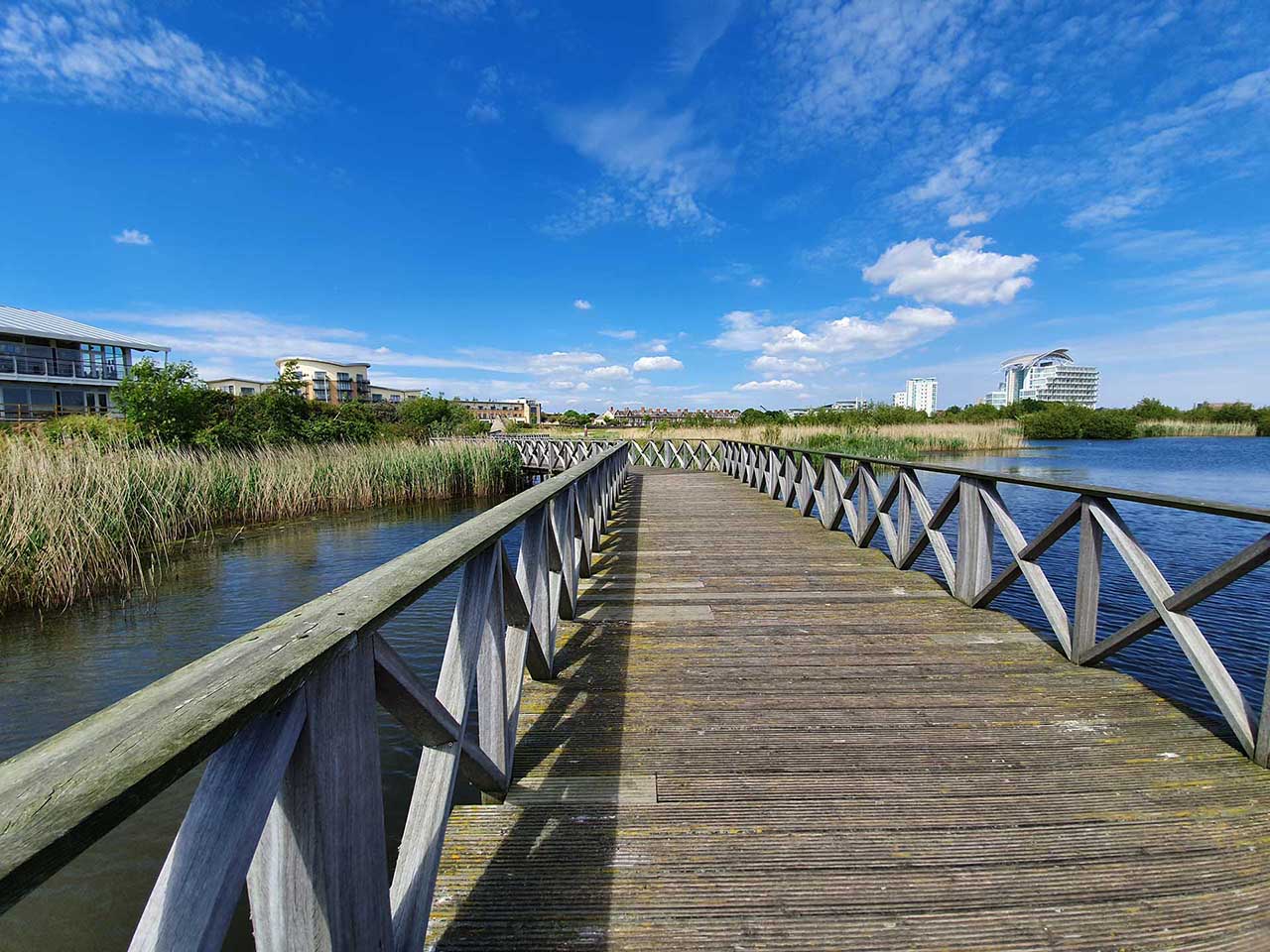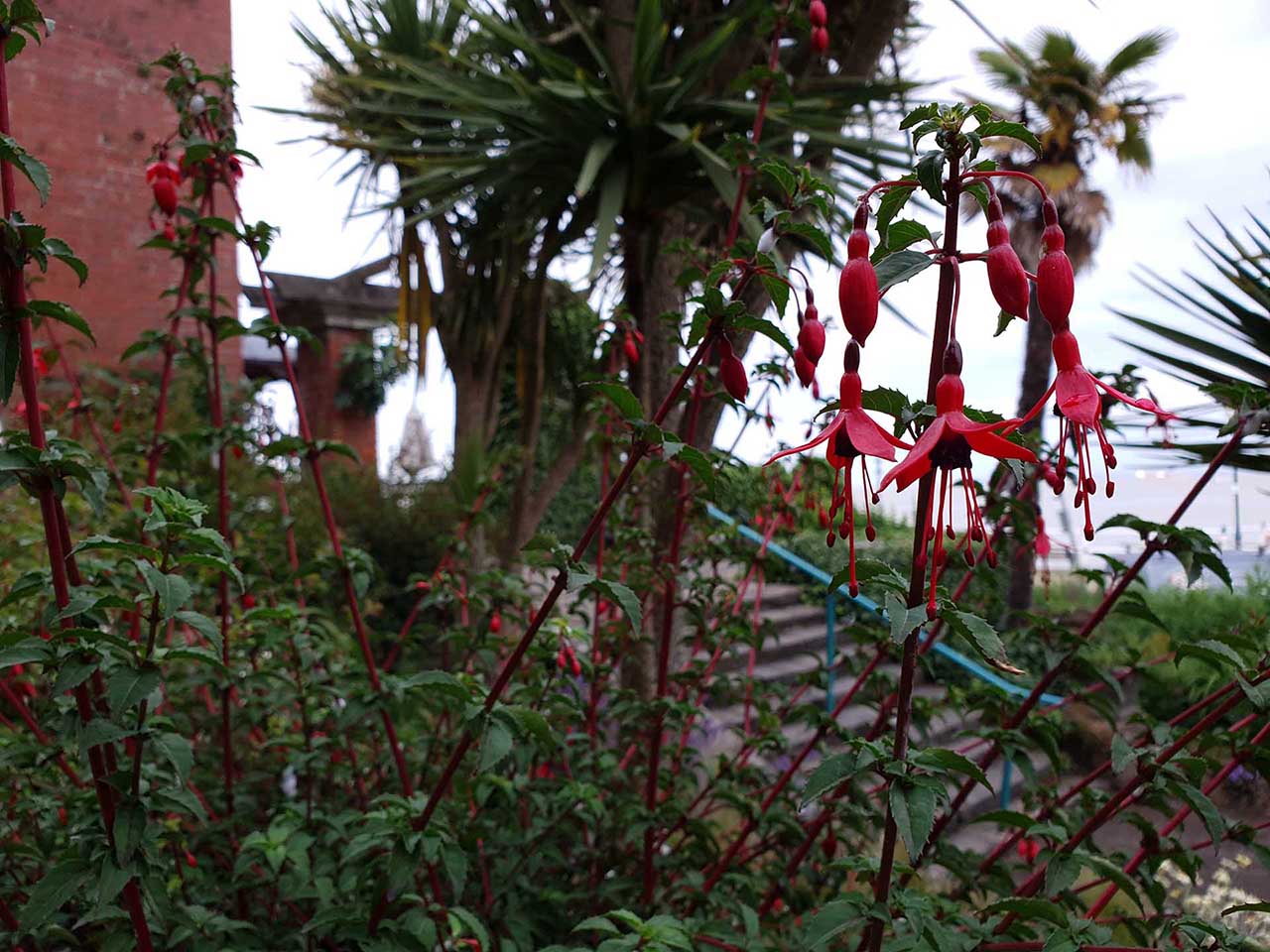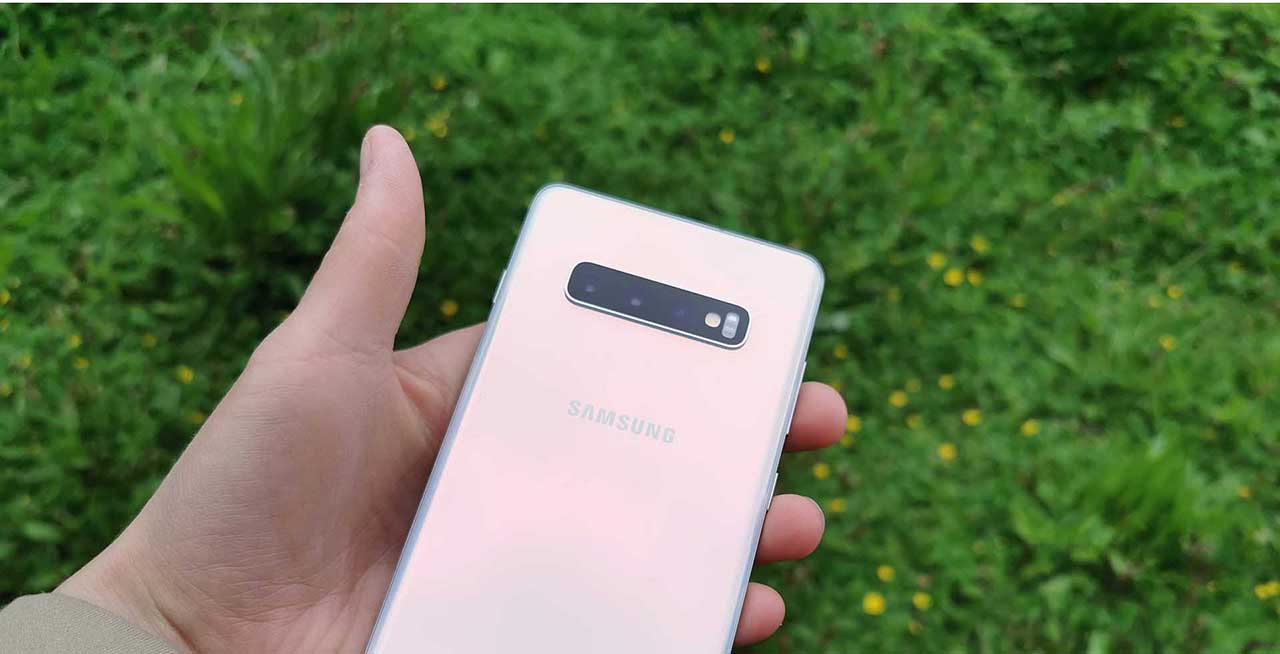With troubles swirling around Huawei at the moment, consumers looking for top-end smartphone with fantastic photography features may be keen to look elsewhere. With a triple-lens setup, raw format shooting, a Night mode, manual control and more features, the Samsung S10+ could just be the phone photographers are looking for.
What is the Samsung S10+?
At the time of writing this review, there are many concerns over the future for Huawei, at least in Europe, after tough sanctions from the US may prevent the company from properly using the Android operating system. Understandably, consumer confidence in the brand has taken a dip. Previously I would not hesitate to recommend Huawei (or Honor) models, but for those who want to play it a little more safe, models such as the Samsung S10+ are the obvious ones to investigate.
Indeed, the Samsung S10+ has a lot of similarities with the most recent Huawei flagship, the P30 Pro. There’s a triple-lens camera which gives you an ultra-wide angle lens to play with, as well as a standard and telephoto lens. Price wise, the Samsung S10+ is not cheap by any means, but it competes reasonably well in its genre. It starts at £899 for the 128GB version (to buy outright), rising up to £1,399 for the largest 1TB capacity.
For the purposes of this review, we were kindly loaned the S10+ by Vodafone, who offers the S10+ on a range of contracts and deals which will see you pay less for the phone up front.

Features
As we’ve seen before with Samsung’s flagship models, there are two variants – the S10 and the larger S10+. The rear cameras on both models are the same, while on the front of the phone, the S10+ has a dual selfie camera, compared to the S10’s single camera offering.
The S10+ has a 6.4-inch screen, putting it in the same realm as phones like the Huawei P30 Pro and the iPhone XS Max. Once upon a time, phones of this size would have been thought of as very large, but nowadays it’s a little more standard.
I’ve already mentioned the triple lens set-up, but to give a little more detail, there’s a wide angle 26mm f/1.5-2.4 lens (Samsung remains the only one on the market to offer a camera with variable aperture control) sitting in front of a 12 megapixel sensor, a super wide-angle 12mm f/2.2 lens which has a 16 megapixel sensor, and finally a 2x 52mm f/2.4 telephoto lens, with a 12 megapixel sensor.
Other interesting features include the ability to record in 4K video at up to 60fps, manual control and raw format shooting. As well as a standard photo mode, you’ve also got Pro mode, Panorama, Live Focus (for creating shallow depth of field effects), Night and Food mode.
You can add additional memory in the form of a microSD card slot, while the 4100mAh battery is one of the largest capacities on the market. A number of different colours are available – for this review we have been using “Prism White”.
Build Quality
The phone uses an attractive design, with nicely rounded corners and a minimal bezel. Interesting is the solution to the “notch” problem, which seems to be tackled by every manufacturer differently at the moment. For the S10 and the S10+, Samsung uses a rounded notch that surrounds the front-facing camera and makes the most of the available screen space. It’s a similar approach to the “hole punch” notch as found in the Honor View 20.
Charging the S10+ is done via a USB-C port, while unusually for many flagship phones, a 3.5mm headphone port is also included. A fingerprint scanner is embedded into the screen, but you can also unlock the phone in a number of other ways, including face recognition, a pin code or a pattern.
As is standard for most modern smartphones, buttons are kept to a minimum. There’s a power on/off button, as well as a volume rocker which you can use for a shutter button when using the inbuilt camera, if you like.
The native camera app for the S10+ is very well-featured, giving you lots of scope to shoot exactly how you want to, and experiment with different modes. Switching between the different lenses is very easy, with clear icons marked on the bottom of the screen.
For manual control, switching to Pro mode gives you the opportunity to change settings such as white balance, ISO, shutter speed and – only when using the main camera – aperture. There’s only two choices (f/1.5 and f/2.4) but it’s good to be able to alternate to the most appropriate one for the shooting situation.
Night mode is a new addition for Samsung phones, and is still a little bit behind the likes of Night Sight as found in the Google Pixel 3, or the very capable night modes found in the Huawei and Honor phones. Still, it comes in useful when shooting dimly lit scenes – and we’re told that further updates to this mode are on the way which should improve usability, too.
Performance
There’s a lot to like about the Galaxy S10+, with images directly from the camera being high in quality with plenty of detail and nicely saturated colours. As generally tends to be the case, it is the “main” camera that performs the best, but the wide-angle camera and telephoto option are also capable of producing nice shots – particularly if your only intention is to share them on social media sites.
In low light, the Samsung Galaxy S10+ delivers good images which are fairly noise-free and with not too much image smoothing. When light is very low, switching to Night mode can help to pick up some additional detail, but it doesn’t perform quite as well as its rivals currently on the market.
Although full manual control is available, I found that leaving the S10+ to decide on settings itself in the automatic mode generally produced very pleasing results. Metering is good, producing well-balanced shots, with automatic white balance also tending to stick on the right side of accurate in a number of different lighting conditions.
Video footage from the camera is very good, too, with different resolutions and frame rates available to suit the needs of most. 4K at 60fps is still impressive for a phone, and for this reason it could be considered a good phone for vloggers and YouTubers.
Samsung Galaxy S10 Plus Sample Photos
Below is a selection of Samsung Galaxy S10+ sample photos I shot during the course of my test.














Verdict
I am frequently asked which smartphones are good for photographers, and I’ve always been quick to recommend Samsung’s models for a number of different reasons. The S10+ follows in the footsteps of several previous excellent Galaxy models making it one of the best options out there for those whose primary concern is the quality of the onboard camera.
Although not quite as flexible as the Huawei P30 Pro in terms of the zoom (you have 2x here, rather than 5x), generally I find that to be more than enough for my smartphone shooting needs. Having the super wide angle lens is a welcome addition to this range that really comes into its own when shooting landscapes and interior shots.
The results produced by the S10+ are very impressive, and to top it all off, the phone is an attractive device too. Being able to add more memory with a microSD card makes it even more appealing.
In the current climate with worries surrounding Huawei, the Samsung Galaxy S10+ would probably be my current top recommendation for those with a good budget to spend on a flagship smartphone and want a fantastic camera.



